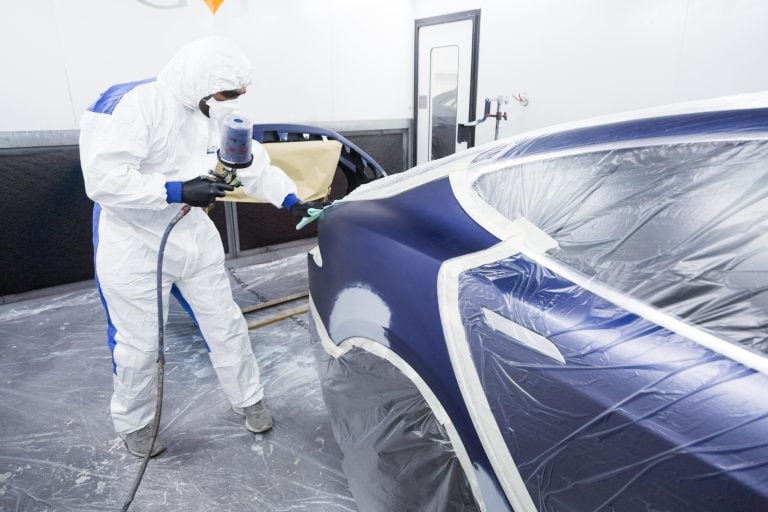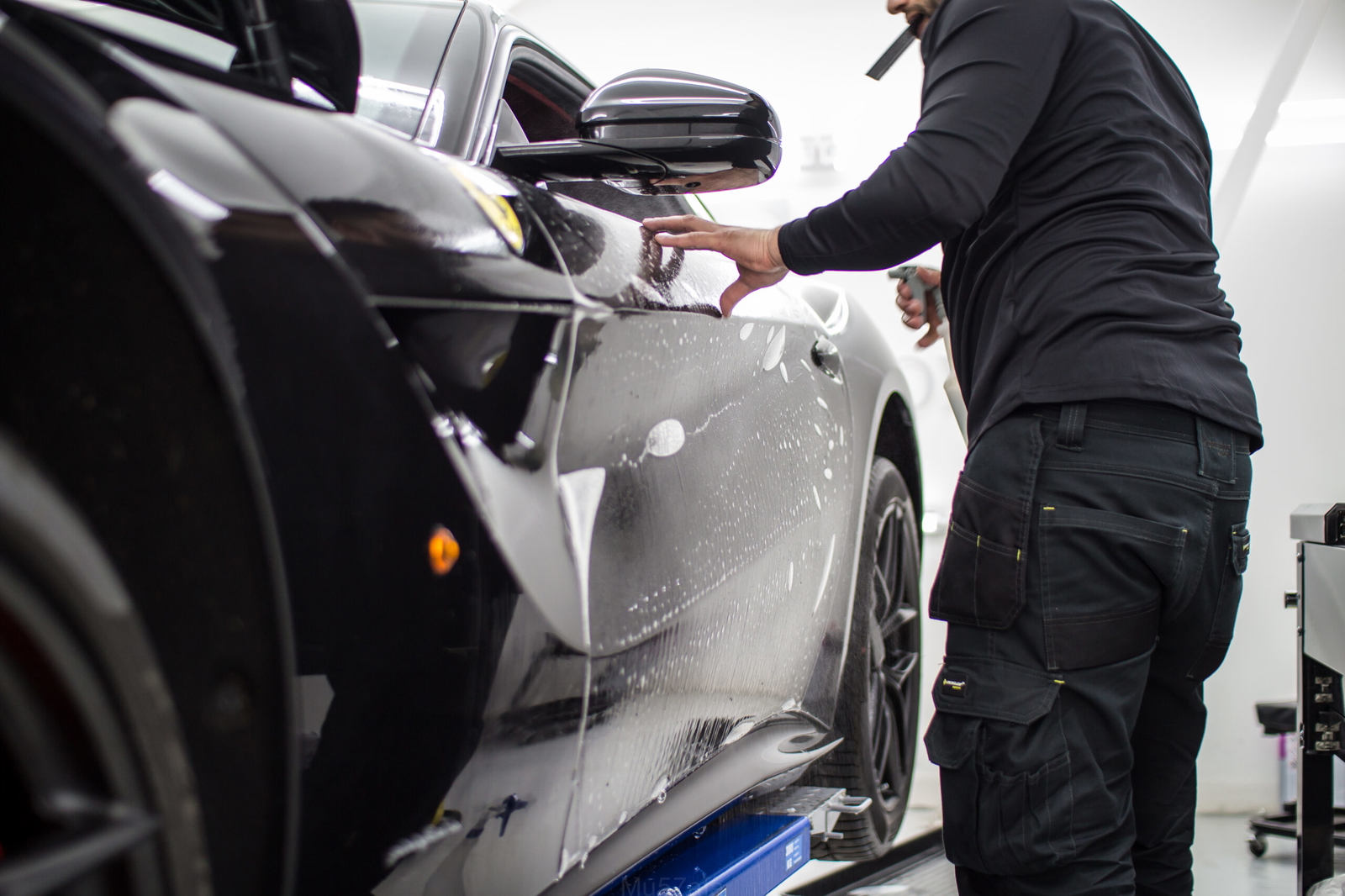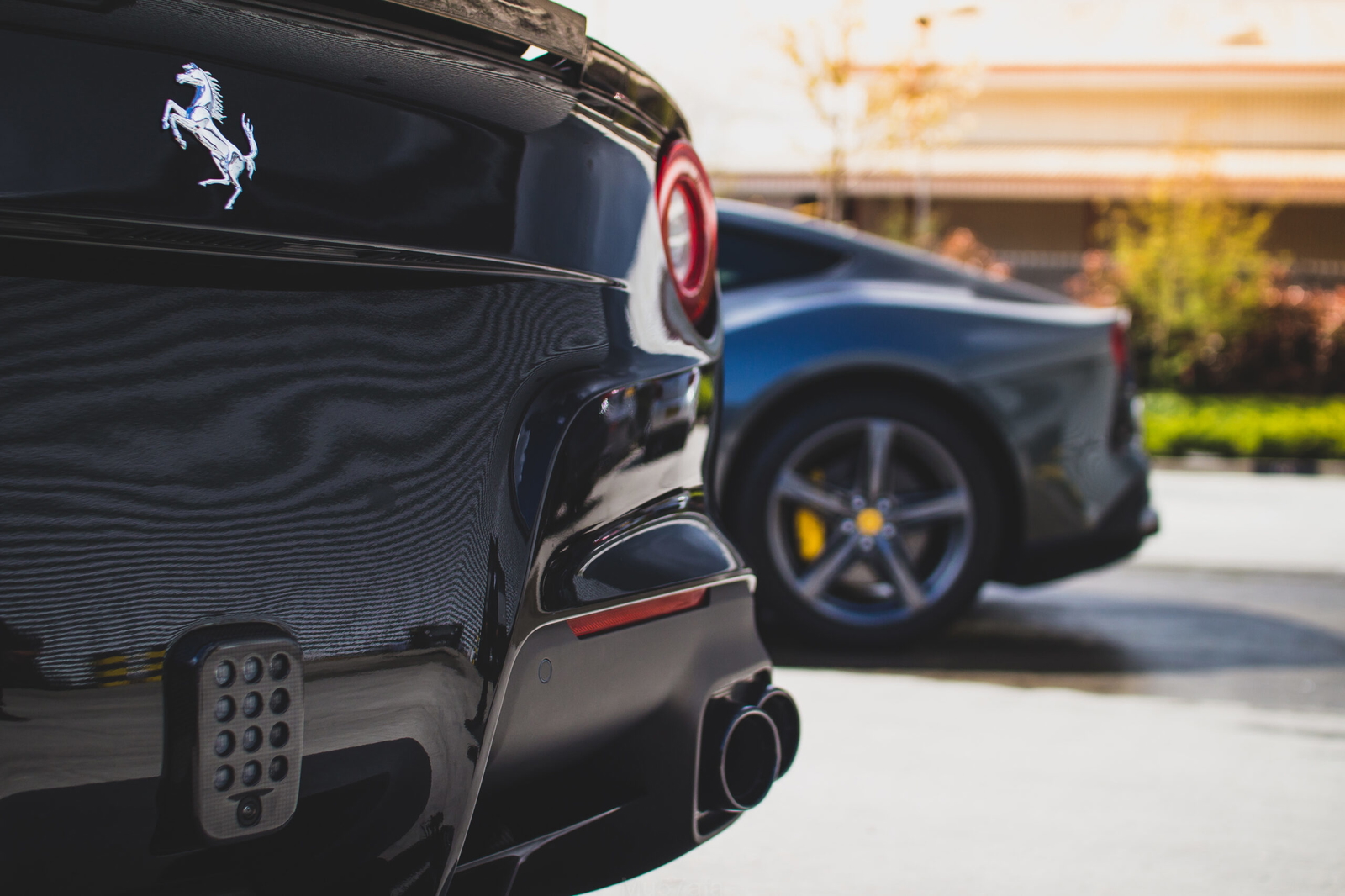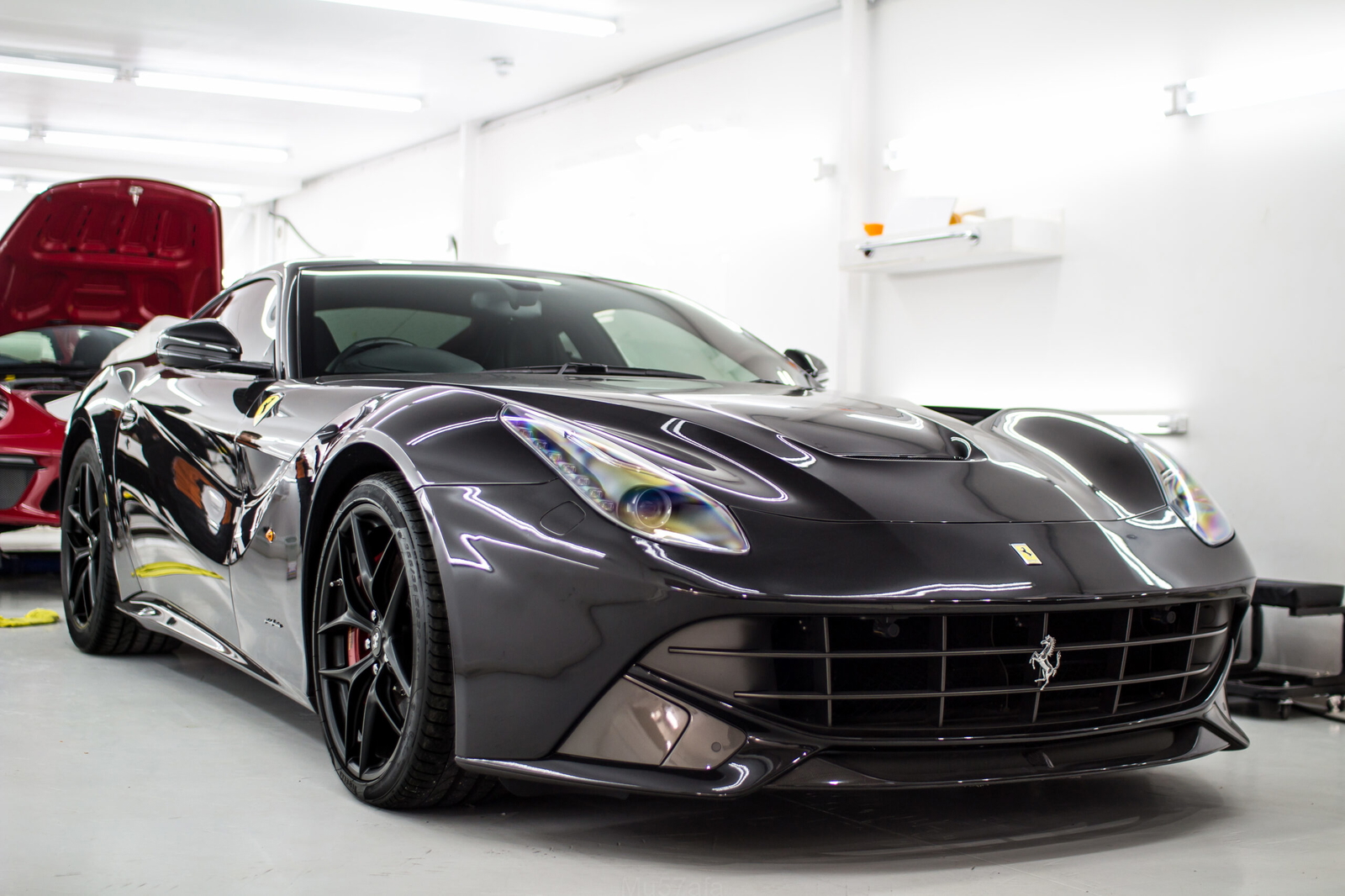- Detailing Case Studies
PPF vs Sealants: Choosing the Best for Durability and Protection | GVE London – Blog
Keep your supercar in top condition with car detailing, PPF, and sealants. Learn about their benefits and drawbacks to make an informed choice for your vehicle
The vehicle you drive is a symbol of your taste and style statement. If you own an expensive supercar, then you must keep it in the best condition possible. Car detailing involves thorough cleaning, polishing, and protecting a vehicle’s exterior to safeguard against paint damage, UV rays, and environmental contaminants.
Paint Protection Film (PPF) and car sealants are two popular options that car owners opt for. Each of them has its own set of advantages and drawbacks. Further, we’ll know about both these procedures and choose the better one out of PPF vs sealants.
What is Paint Protection Film (PPF)?
Paint Protection Film (PPF), often referred to simply as PPF, is a clear, thermoplastic urethane film applied to the exterior surfaces of a vehicle. Its primary purpose is to provide a protective barrier against scratches, rock chips, and other minor abrasions that can occur during everyday driving.
PPF is typically self-healing, meaning it can absorb and dissipate minor scratches and swirl marks over time, maintaining the pristine appearance of your vehicle.
Benefits of Paint Protection Film (PPF)
- Scratch Resistance – PPF offers excellent resistance to scratches and swirl marks, keeping your car’s paintwork looking new for longer.
- Impact Protection – It provides a robust shield against road debris, such as stones and gravel, which can cause chips and dings on unprotected surfaces.
- Self-Healing Properties – Many PPF products have self-healing properties that allow minor scratches to disappear when exposed to heat, such as sunlight or a heat gun.
- Longevity – When professionally installed and maintained by a reliable detailing centre like GVE London, PPF can last several years, providing long-term protection for your vehicle’s paint.
Drawbacks of Paint Protection Film (PPF)
- Cost – PPF installation can be more expensive compared to other protective treatments due to material costs and professional installation requirements.
- Visible Line Depending on the installation quality and the type of PPF used, a visible line may be noticeable on the edges of the film, especially on darker-coloured vehicles.
What is a Car Sealant?
Sealants are synthetic products designed to create a protective layer on top of the vehicle’s paintwork. They are typically made from polymers or acrylics and provide a glossy finish while enhancing the depth of the paint colour.
Even though car sealants do not offer the same level of physical protection as PPF, they are still valued for their ease of application and maintenance.
Benefits of Car Sealants
- Enhanced Shine – Sealants provide a deep, glossy finish that enhances the appearance of the vehicle’s paintwork.
- Ease of Application – Unlike PPF, which requires professional installation, sealants can be applied by car owners themselves, making them a cost-effective option for some.
- UV Protection – Sealants offer protection against UV rays, which can cause paint fading and oxidation over time.
- Water Repellent – Many sealants have hydrophobic properties, causing water to bead and roll off the surface, making cleaning easier.
Drawbacks of Sealants
- Limited Physical Protection – While sealants provide some protection against minor contaminants and UV rays, they do not offer the same level of impact resistance as PPF.
- Durability – Sealants typically last several months before requiring reapplication, depending on weather conditions and maintenance practices.
Choosing Between PPF and Sealants
Next, we have done a comparison between PPF vs sealants across several important categories to find out the better option.
Level of Protection Needed
If you prioritise physical protection against scratches, chips, and road debris, PPF is the superior choice. It offers a durable shield that can significantly extend the lifespan of your vehicle’s paintwork.
Budget Considerations
PPF tends to be more expensive due to both material costs and professional installation fees. Sealants offer a more budget-friendly option for enhancing appearance and providing basic protection.
Longevity and Maintenance
Even though it requires minimal maintenance beyond regular washing, paint protection film lifespan lasts several years. Sealants, while easier to apply, may need reapplication every few months to maintain their effectiveness.
Trained professionals should do DIY vs Professional Installation PPF installation to ensure proper fit and maximum effectiveness. Sealants, on the other hand, can be applied by car owners themselves, making them accessible to those who enjoy DIY car care.
Conclusion
The choice between PPF and car sealant ultimately depends on your priorities, budget, and preferences regarding protection, longevity, and ease of maintenance. Whether you opt for the robust physical defence of PPF or the glossy finish and easy application of sealants, investing in protective treatments will help preserve your vehicle’s appearance and resale value for years to come.
For high-quality PPF installation on your luxury vehicle, GVE London is the place to be. You can also access wrapping, customisations, modifications, servicing, repairs, and several other services for your supercar here.
Frequently Asked Questions
PPF can last several years with proper maintenance, while Sealants typically need reapplication every few months to maintain effectiveness.
Yes, Sealants can be applied over PPF to enhance shine and provide additional UV protection. However, Sealants do not add physical protection to PPF.
Car owners can apply sealants as a DIY project, while professionals typically do PPF installation to ensure proper fit and effectiveness.
Contact Us
"*" indicates required fields
OUR SERVICES
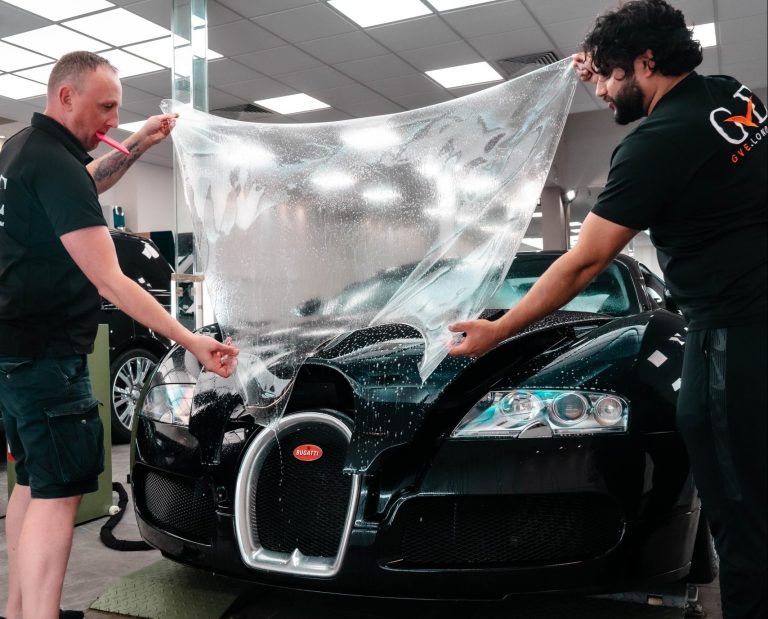
PAINT PROTECTION FILM
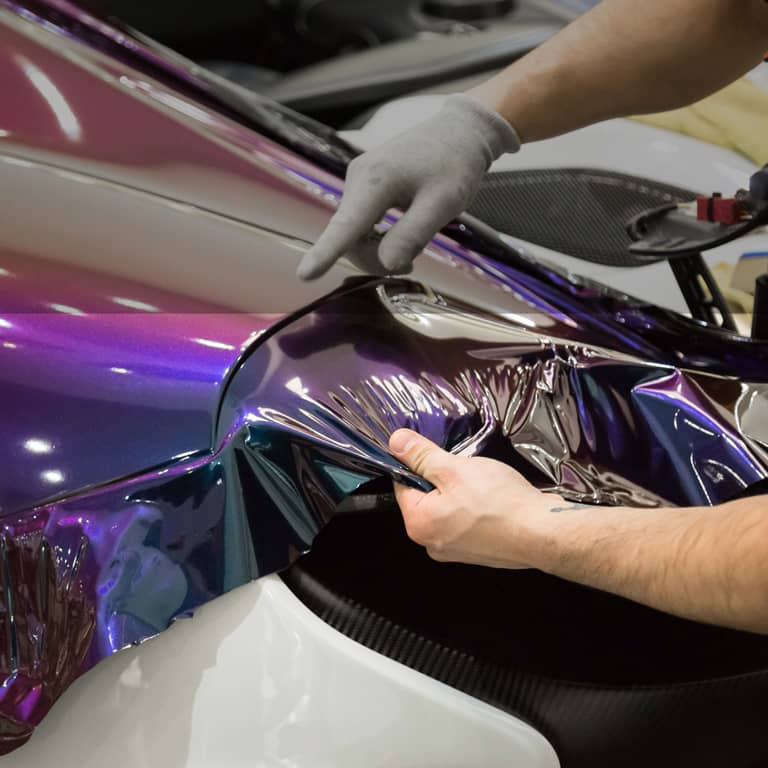
WRAPPING
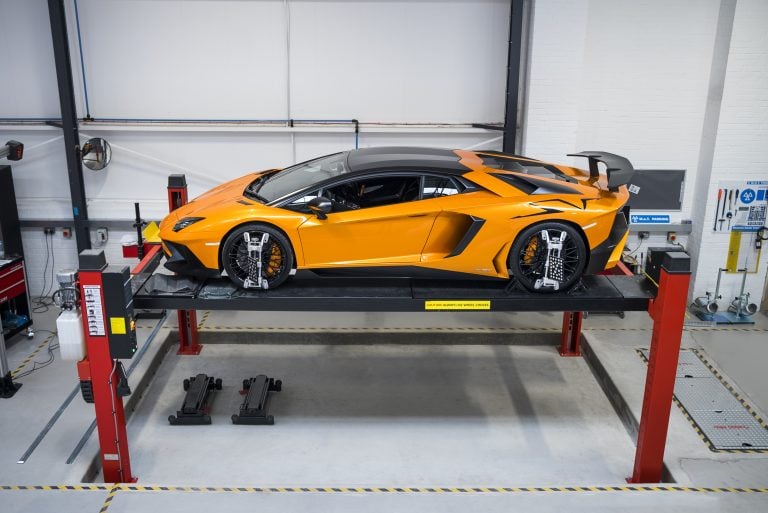
SERVICING
